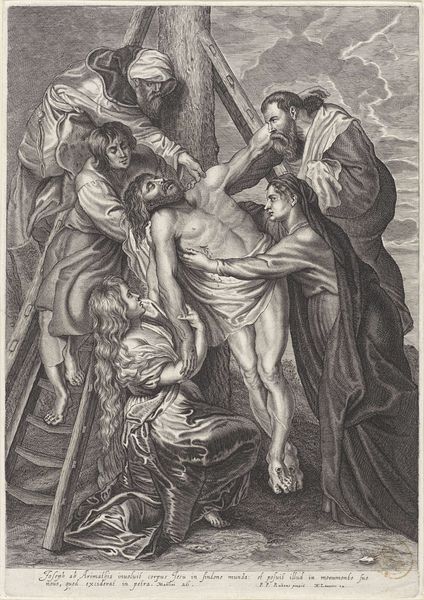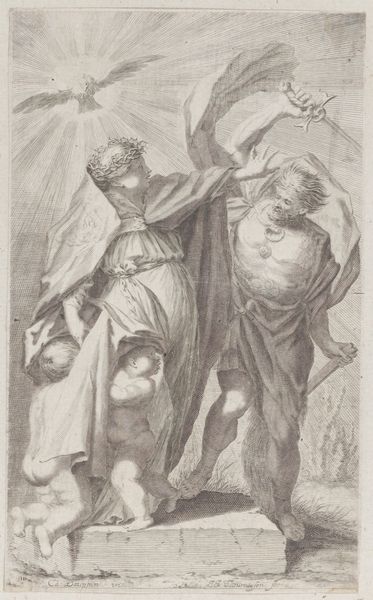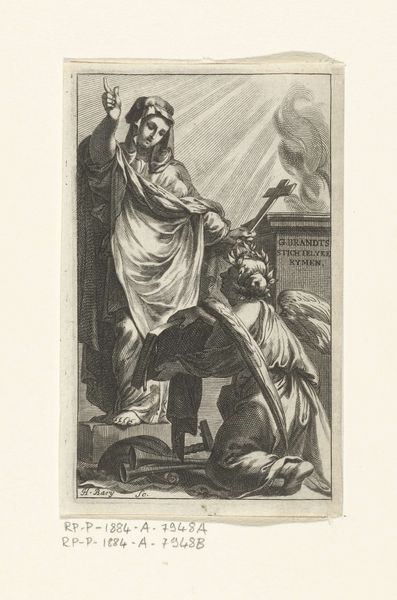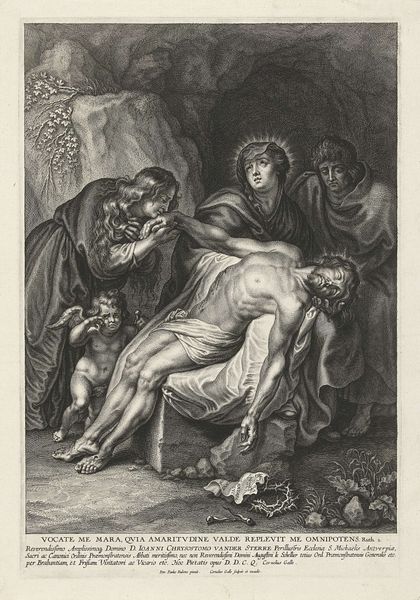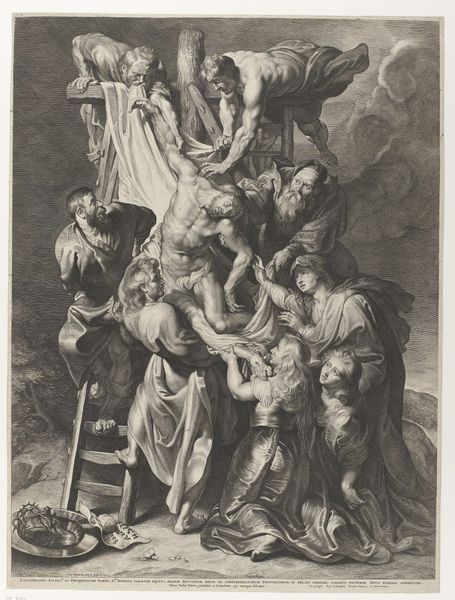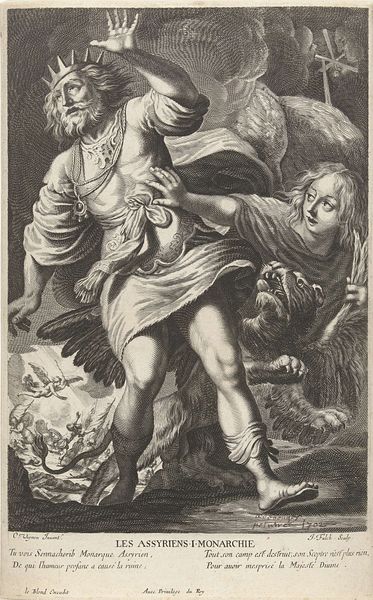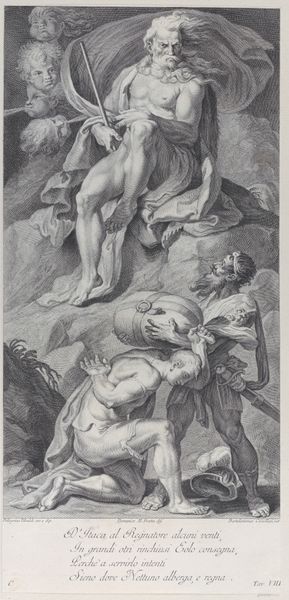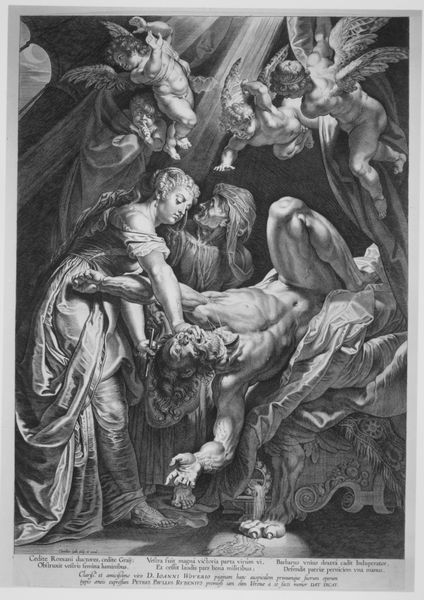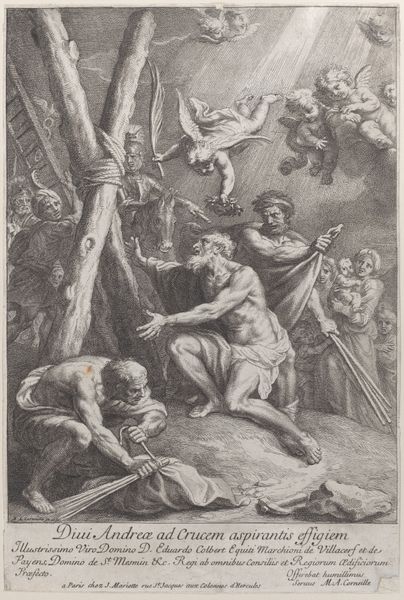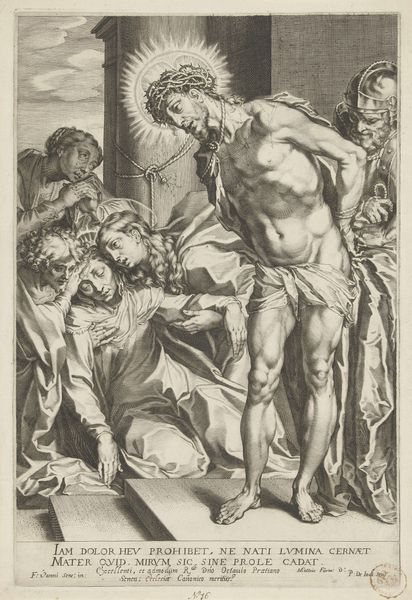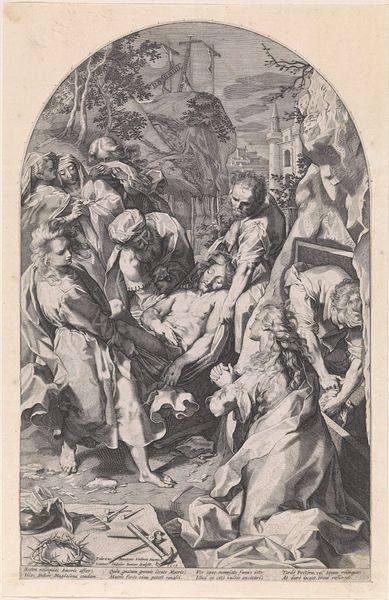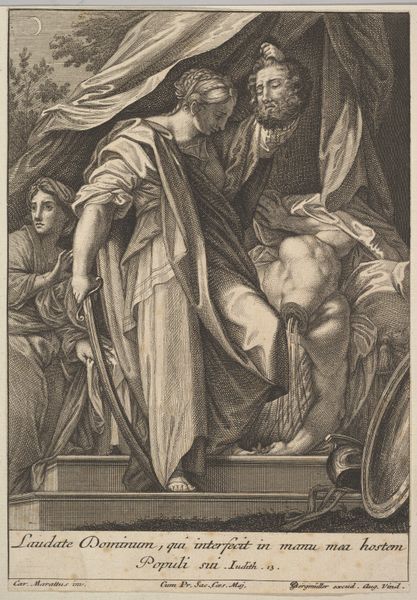
engraving
#
portrait
#
baroque
#
caricature
#
figuration
#
portrait reference
#
portrait drawing
#
history-painting
#
engraving
Dimensions: height 803 mm, width 390 mm
Copyright: Rijks Museum: Open Domain
Editor: Here we have Cornelis van Caukercken’s "Bewening," an engraving from the period of 1636 to 1680. The grief is palpable. It's hard to ignore the religious and political undertones of this Baroque-style piece. What exactly is going on here, and what meaning might it carry today? Curator: This isn't just an image of mourning; it’s a potent symbol loaded with intersectional implications. Look at how the figures supporting Christ are rendered, their faces etched with sorrow. But who are they really mourning? Are they mourning a spiritual leader, or are they mourning the disruption of a specific social order, or both? Editor: I see what you mean. It’s about power and resistance too, not just religious piety. Curator: Exactly. Consider the historical context: the tensions between religious institutions and emerging secular powers, and even gender. Who typically holds space for mourning? And who is allowed to perform it publicly? In Baroque art, there is a visual language of both submission and rebellion against dominant societal norms. Do you see hints of this struggle embodied in the work? Editor: Now that you point it out, yes! The way the women’s grief is so prominently displayed…it almost feels like a statement, even a challenge to those in power who are repressing marginalized groups. It makes me rethink Baroque art’s association with the Counter-Reformation as more than simply propaganda. Curator: It pushes us to see the complex negotiations for identity and power that artists and patrons navigated during that period, doesn't it? The choice to depict these figures, the specific way grief is portrayed — all contribute to a nuanced understanding of faith and agency in the 17th century. Editor: I guess I had never thought about "Bewening" as something more than a religious scene. I see how the act of mourning here becomes a very subversive political statement. Curator: It's in deconstructing such familiar narratives that we truly begin to appreciate the profound, enduring messages embedded within these works.
Comments
No comments
Be the first to comment and join the conversation on the ultimate creative platform.
